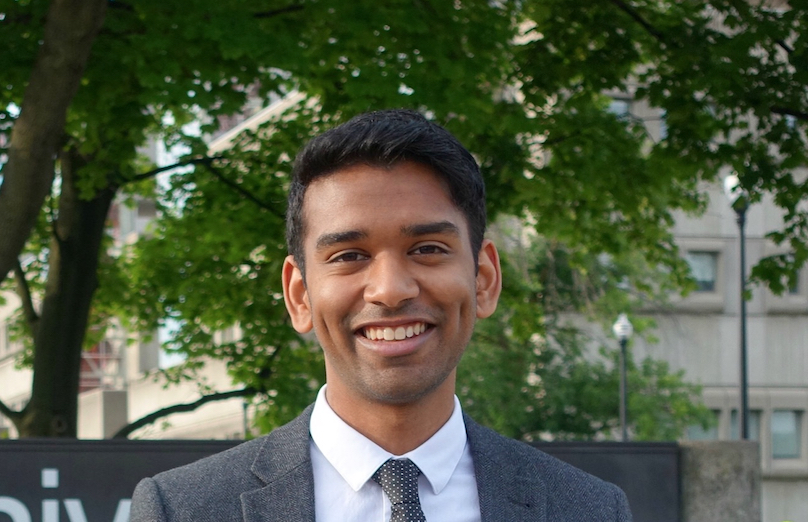Global Mental Health Systems Innovation: When human-centric design thinking meets consulting projects
Written by: Eshan Shah
As a student of the Master of Management of Applied Sciences in Global Health Systems, we were often inspired to understand and tackle the ‘wicked problems’ of the world. A wicked problem is difficult to define, socially complex, multi-causal and has no clear solution. Yet the presentation of these problems in class was usually easy to follow, and neatly organized into problem, risk, and stakeholder outlines.
However, in the graduate course Global Mental Health System Innovation (taught under Global MINDS), we were directly immersed in these real-life problems. Being paired with a community partner to make sense of their issue from scratch rather than a prepackaged outline proved to be a very different experience. It demonstrated to me that these ‘wicked problems’ could actually be perceived as wicked opportunities. The program challenged me to conceptualize the issues at hand outside of specialized spheres of response, and to generate solutions that were humble and user-centered, such that anyone could be part of the innovation process.
My team was partnered with the Cross Cultural Learner Centre (CCLC), an agency that supports government-assisted refugees to settle in Canada. Our problem brief centered around the lack of mental health and wellbeing supports available to incoming Syrian youth. One tool that the course introduced me to was “system mapping”, which we used to dissect the system of mental healthcare provision in London. Creating this map challenged my team and the CCLC to take a step back in conceptualizing the various components of the Syrian refugee experience of healthcare. By highlighting the various interactions between these components, we were able to identify opportunities to influence wellbeing beyond just clinical diagnoses.
Now while I came to Western with some experience in community-based participatory research (CBPR), I initially found it very difficult to reconcile this with our consulting experience. I felt that CBPR relied on a people-centric approach when compared to the results-oriented approach of consulting. However, as I explored the concepts of design-thinking throughout the course, I came to realize that the two processes could be very easily integrated. The key to an effective consulting project was indeed to keep it participatory and user-centered.
For example, our initial literature review collected some pre-existing frameworks through which to view mental health in refugee populations. The subsequent interviews that we conducted at the Cross Cultural Learner Centre (CCLC) with newcomer families challenged these assumptions provided by academic literature. Our interactions instead suggested that the primary need to be met was actually employment and that the families felt their youth easily integrated into the school system without identifying any mental health challenges. I enjoyed being challenged in this way, and was reminded that the academic interpretations of newcomer populations are often different than the reality, which is very dependent on context.
However, the final innovation we produced was still a challenge for me to accept. We proposed that the CCLC host a cultural celebration event that integrated local schools and community centres (like the YMCA), who would be able to bring wellbeing programming directly to the newcomer attendees. It seemed so humble an idea to actually qualify as a disruptive innovation, and I felt like we had failed. This is when I was most thankful for the support of my group, and their ability to work through the guiding questions provided by our mentor to demonstrate how the solution was indeed disruptive. The beauty in our solution, and with all effective innovations, was in empowering the community group that we were working alongside. Our objective was to help identify how ownership over their healthcare, which they may have had in their previous community, could be regained while in Canada. Their confidence in the solution inspired me to approach our final pitch with enthusiasm.
I had entered the course with an idea of the ‘innovation process’ involving color-coded sticky notes and grand ideas. But I learned that our clear, simple, and uplifting vision turned out to be just as impactful on the system. I learned that we are seeking to create reversals of pre-existing situations to empower each other through. I learned that this process applies across the world, and can be tweaked under various contexts. And I learned that the search for a disruptive social innovation is often a humble process, but one that I want to engage in professionally for the rest of my career. I am thankful for this opportunity, and proud of what was accomplished through it.
About Eshan Shah:

Eshan is a graduate of the Global Health Systems in Africa specialization of the Master of Management in Applied Sciences at Western University. Through this degree, he had the privilege to carry out his practicum in Kampala, Uganda at the Joint Clinical Research Centre. The experience of co-creating a social business model for a bee-farm in rural Uganda compounded the interest in design-thinking that Global MINDS had inspired. Upon his return to Canada, he continued to seek out opportunities related to social impact work. A recent design jam he participated in brought people from all disciplines together to tackle local Toronto challenges, and reminded him that these exciting opportunities are not just found abroad. With the right perspective, anything around us can be a challenge to innovate better. Eshan is currently consulting with an incubator in Brampton, Lab-B.
About the GMFP SnapShot Blog:
Through the SnapShot Blog, past and current Global MINDS students and Fellows will share insightful and authentic reflections regarding their experiences with the program and their progress of implementing and evaluation their solutions.








